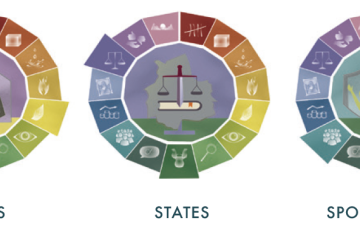A guest post by Steve Bishop
Twenty-five years after the death of Dutch theologian Herman Bavinck (1854–1921), his compatriot Arie B. W. M. Kok lamented that “Bavinck’s person and work no longer receives the appreciation he deserves from our current generation.” But in recent decades this tide has turned, and for good reason: Bavinck offers a powerful example of how to engage modern intellectual currents without compromising theological integrity. He navigated the challenges of modernity—science, psychology, pluralism—with deep commitment to Scripture and the Reformed tradition. For students navigating secular academic spaces, his approach models how to think both critically and Christianly.
Bavinck’s theological method is especially relevant today. He modelled a faithful yet dialogical posture, engaging modern science, pedagogy, philology, psychology, and culture without diluting doctrinal integrity. His work speaks to key contemporary questions: How should Christians live in a secular world? How can theology relate to public life, art, education, or technology? Bavinck’s legacy lives on in the neo-Calvinist tradition and beyond, offering a compelling model of theological depth, cultural engagement, and Reformed catholicity.
For several decades the consensus was that there were two poles to Bavinck’s thought: one modern, and the other orthodox or pietist—the so-called “two Bavincks hypothesis.” The “organic” motif prominent in Bavinck’s thought was once thought to reflect a distinctly modernist German idealism, in tension with his orthodoxy. But more recent scholarship has traced this motif’s Calvinistic heritage, and the way it reflects—among other things—a natural, gradual, coherent development of creation. It highlights unity-within-diversity, as creation mirrors the Trinity’s unity and diversity. Far from being schizophrenic, the structure of Bavinck’s major work Reformed Dogmatics reveals his deep Trinitarian emphasis.
Another key theme is what Bavinck calls catholicity. His gospel vision embraces all of life—family, society, art, science, and the cosmos. His “grace restores nature” approach not only holds that grace renews rather than destroys nature, but also moves beyond envisioning a simple restoration of Eden towards development of the Earth into a “garden city”. Bavinck also contributed significantly to the doctrine of common grace, emphasising that while Christianity is the true religion, God’s gifts and revelations are evident even among non-Christians. Common grace preserves and enriches culture, without being conflated with saving grace.
Throughout his work, Bavinck was both orthodox and modern. His dynamic theology responded to historical developments while remaining grounded in the Reformed tradition. Revelation stands at the heart of his thought—God’s self-disclosure is essential for knowing Him and understanding creation. For Bavinck, all true knowledge begins with and depends upon divine revelation, uniting theology, philosophy, and everyday life under the lordship of Christ.
As Bavinck’s works continue to be studied and re-evaluated, his enduring impact on theological thought becomes increasingly evident, solidifying his place as a significant figure in the landscape of Reformed theology. Bavinck’s emphasis on an organic view of reality, the interconnectedness of all aspects of life, and the idea that grace restores nature in a redemptive way are central themes that permeate his thought. His Trinitarian perspective and understanding of revelation shape these themes, providing a coherent and comprehensive framework. On his deathbed, however, he is reputed to have said: “My learning is now of no use to me; my dogmatics do not benefit me either; only faith saves me.” His faith was in his saviour and not in his scholarship.
Getting Started with Bavinck: A Reading Guide
For newcomers to Bavinck, especially non-theology postgraduate students, James Eglinton’s Herman Bavinck: A Critical Biography (Grand Rapids: Baker, 2020) is a context-rich and accessible starting point.
Bavinck’s theological masterpiece is his four-volume Reformed Dogmatics (1895-1901)—a systematic theology exceeding 3,000 pages and published in English between 2003 and 2008 (Baker). Structured around the Trinitarian shape of doctrine, the work covers:
- Volume 1: Prolegomena—foundations of theology and revelation
- Volume 2: God and Creation
- Volume 3: Sin and Salvation in Christ
- Volume 4: The Holy Spirit, Church, and New Creation
For those daunted by the full set, John Bolt’s Reformed Dogmatics – Abridged in One Volume (Baker, 2011) offers a more manageable entry point. Bavinck himself also produced accessible summaries:
- Our Reasonable Faith (also published as The Wonderful Works of God): a lay-level overview of his theology
- Guidebook for Instruction in the Christian Religion: a simplified version for secondary students, recently translated by Parker and Clausing
For a critique of Bavinck from a reformational perspective see John Vander Stelt’s Chapter 4 in Faith Life and Theology (Jordan Station: Paideia Press, 2020). Vander Stelt views Bavinck’s anthropology as potentially problematic because it reflects a traditional, scholastic view that may oversimplify or misrepresent human faculties and their interactions.
____________________________________
This piece is a summary of Steve Bishop (2025): “Herman Bavinck’s Revival in Modern Reformed Scholarship,” Pro Rege 53(3):1–16, available at: https://digitalcollections.dordt.edu/pro_rege/vol53/iss3/1.
Steve Bishop is a trustee of Thinking Faith Network and maintains the All of Life Redeemed web pages. His PhD looked at the (lack of) reception of Reformational ideas by English Calvinists. He blogs at stevebishop.blogspot.com and tweets @stevebishopuk.
Image: a colorised version of https://en.wikipedia.org/wiki/Herman_Bavinck#/media/File:HermanBavinckBig.jpg



1 Comment
Mark Roques · June 24, 2025 at 8:13 pm
Thanks so much for this very informative and interesting article about Bavinck. I knew very little about him so your article really hit the spot.
Comments are closed.